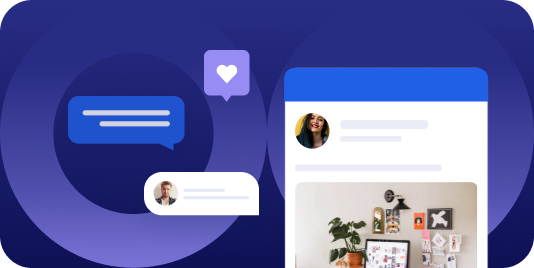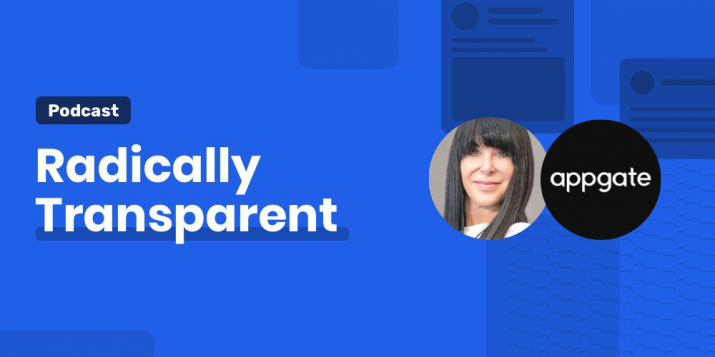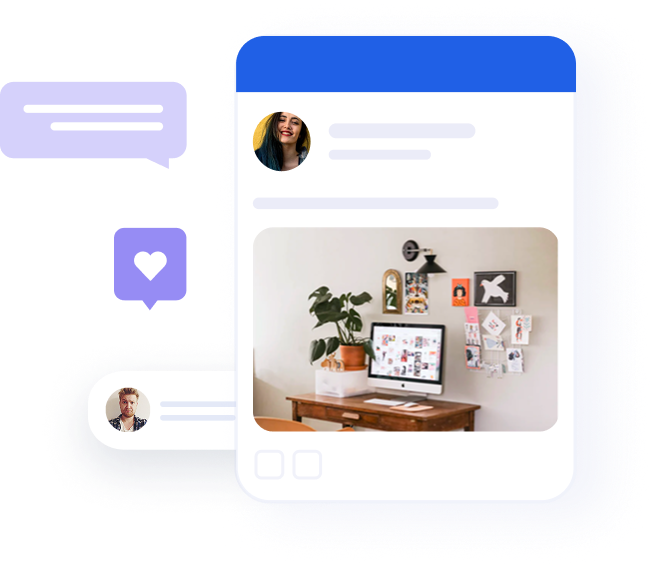![33 employee advocacy statistics [infographic]](https://cdn-www.oktopost.com/blog/wp-content/uploads/2022/02/employee-advocacy-statistics.png)
33 employee advocacy statistics [infographic]
Table of contents
Any company’s most valuable asset are its employees—and if you’ve tried to recruit in the past two years, chances are, you know just how valuable they are.
But B2B companies are now understanding another fact: employees can provide much more than their base job productivity. Employee advocacy, how your employees express themselves about your brand on social media, is a hot topic for many that want to cement their employer branding, increase positive brand sentiment, and boost their social selling efforts.
Employee advocacy benefits so many individual aspects of both your company and your employees themselves. In this piece, we’ve compiled a list of compelling employee advocacy statistics that make the case for implementing your own employee advocacy program.
Jump to a section:
- Top Employee Advocacy Statistics
- The Best Networks for Employee Advocacy
- Statistics on Social Selling and Thought Leadership
- Statistics on Employer Branding and Talent Acquisition
Top employee advocacy statistics
Employee advocacy goes further than simply resharing corporate posts—it’s when your employees take ownership of the brand for themselves, setting their social accounts apart as thought leaders in their industry. While many employee advocacy statistics are from older studies, we’ve assembled the most recent stats on how advocacy really impacts brands.
Having an employee advocacy program increases the total social engagement for a brand by 25% to 40% at minimum. (2022 Employee Advocacy Benchmark Report)
Nearly half of CMOs stated that employee advocacy was their best-performing social initiative. The next highest-performing social initiative was social selling (32%), another form of employee advocacy. (The State of B2B Social Media Marketing Report)

30% of brand engagement comes from employees. Employees are 14 times more likely to share brand content than other types of content. (LinkedIn)
86% of employees participating in an employee advocacy program said it positively impacted their careers. (Hinge Research Institute)
63% of 18-34-year-olds trust an influencer’s opinion of a brand more than what the brand advertises about itself. (Edelman)
Fujitsu experienced 3.6 times more ROI on employee advocacy posts over the same amount spent on paid social. (Oktopost)
ACI Worldwide saw a 130% increase in traffic from social media & 40% more converted leads from employee-shared content. (Oktopost)
Capco drove 13 times more conversions with employee advocacy. They received 20 times their usual customer sign-up rate compared to their paid media efforts. (Oktopost)
Burwood enjoyed an 80% lift in click-through rate and a 400% increase in social conversions from employee advocacy. (Oktopost)
Not to mention, at Oktopost, we performed our own employee advocacy re-launch and competition in Q1 2022. In just 90 days, here are our results:
We increased our total conversions from social media by 266% with employee advocacy.
We experienced an increase of 63% in total engagement.
We earned a 66% more clicks on social posts from advocacy.
Employee advocacy statistics: the best networks for advocacy
Not all networks work the same for employee advocacy. Some social networks are great for facilitating deeper conversations, like LinkedIn and Facebook. Others are better for quick and easy sharing, like Twitter. Keeping these unique networks in mind, check out these employee advocacy statistics on engagement performance by network from the 2022 Employee Advocacy Benchmark Report.
LinkedIn is the most successful social network for B2B employee advocacy. While it earned 84% fewer shares than Facebook, LinkedIn offered 47 times the number of link clicks generated by Facebook.

LinkedIn employee advocacy posts earned 24 times as many comments as Facebook and Twitter combined.
In 2021, Twitter added 39 times the number of shares added by LinkedIn advocacy posts, and over 5 times the number of shares added by Facebook.

Twitter accounts for nearly 85% of all shares generated by employee advocacy posts.
Twitter advocacy posts drove 3.7 times the number of link clicks that Facebook generated in 2021.
LinkedIn earned 12 times the engagement of Twitter, and over 74 times the engagement of Facebook.

LinkedIn is the undisputed leader for employee advocacy for a few key reasons:
- LinkedIn is where B2B customers are: Uniquely positioned for B2B and professional discourse, LinkedIn is a preferred network for sharing content from brands.
- LinkedIn has an overwhelming global reach: LinkedIn has a uniquely diverse user base, with roughly 810 million members across over 200 countries.
- LinkedIn is well adapted to thought leadership: Being poised to facilitate deeper discussions, LinkedIn is a great place to post and find thought leadership. This makes employee advocacy more attractive on the platform.
That said, it doesn’t mean you should discount using other social networks for employee advocacy. Even if Facebook and Twitter contributed 5% of employee advocacy sales, that’s still a significant impact to your bottom line.
Employee advocacy statistics on social selling and thought leadership
Social selling is a compelling use-case for employee advocacy—after all, if there’s anyone that should be creating meaningful relationships with your B2B customers, it’s your sales team. Social selling makes a huge difference for B2B companies, and these advocacy statistics highlight those benefits.
Salespeople who use social media to sell are 51% more likely to hit their sales quotas over their peers who don’t. (LinkedIn)
LinkedIn accounted for nearly 95% of total conversions from employee advocacy posts. (2022 Employee Advocacy Benchmark Report)

78% of social sellers regularly outsell their less social-savvy peers. (LinkedIn)
Nearly all sales professionals (96%) say they’re more likely to consider a brand if that brand’s salespeople have a clear understanding of their business needs. (LinkedIn: The State of Sales)
54% of decision-makers and 48% of C-Suite executives say they spend over an hour per day consuming thought leadership. (Edelman)
47% of buyers say thought leadership helped them discover and purchase from a company that was not a leader in their industry. (Edelman)
83% of a typical B2B purchase decision happens before the customer actually engages with a brand or its salespeople. (Edelman)
With these statistics in-mind, it’s easy to see why employee advocacy and social selling would be attractive to your salespeople. Your sales team has nothing but benefits from working on their personal brand and creating thought leadership content for social media. Using social media to learn more about and create meaningful relationships with prospects.
You never know, the thought leadership content your employees create might be what gets a prospect a little closer to considering you over your competitors.
Employee advocacy statistics on employer branding, and talent acquisition
Employee advocacy is far from beneficial for only your sales team. Employee advocacy helps you attract the best new talent the market has to offer, and retain the talent you already have. These employee advocacy statistics from Glassdoor and LinkedIn help make the case for employer branding.
86% of HR professionals have said that recruiting is becoming more and more like marketing.
75% of active jobseekers are more likely to apply for a role if the employer offering that role manages its employer brand.
68% of Millennials, 54% of Gen-Xers, and 48% of Boomers said that they look at a potential employer’s social media accounts to evaluate the employer’s brand.
A strong employer brand can reduce the cost of hiring by as much as 50%, while a negative employer brand can increase the cost of hiring as much as 10% per new hire.
Those actively managing their employer brand can reduce employee turnover by as much as 28%.
Companies with a high number of employees sharing high-quality content and thought leadership are 58% more likely to attract talent. (LinkedIn)
Social media is now a job-search channel—49 million people are using LinkedIn for job hunting each week. (LinkedIn)
While employee advocacy normally gets written off as “another brand exercise,” the impact is significant and measurable. If you have employees regularly sharing high-quality content and thought leadership, it sets a great precedent for potential candidates who are definitely checking out your social networks.
A wall of corporate and promotional posts may not stand out the way you need it to when it comes to attracting talent. However, if you are highlighting employee wins, and you have employees amplifying your brand’s voice through social media, that’s what stands out from the noise.
Download the full employee advocacy infographic
Employee advocacy statistics paint a portrait of only some benefits incorporating your own program can have. Not only does employee advocacy increase the amount of revenue you can generate from social media, it:
- Expands the overall reach of your brand.
- Transforms your employees into thought leaders in their respective industries.
- Increases the likelihood that your current employees will be more loyal to your company.
- Keeps your employees eager to help attract other great employees.
What’s stopping you from launching your own employee advocacy program? Check out Oktopost today, and see how an advocacy strategy can benefit your company now!






